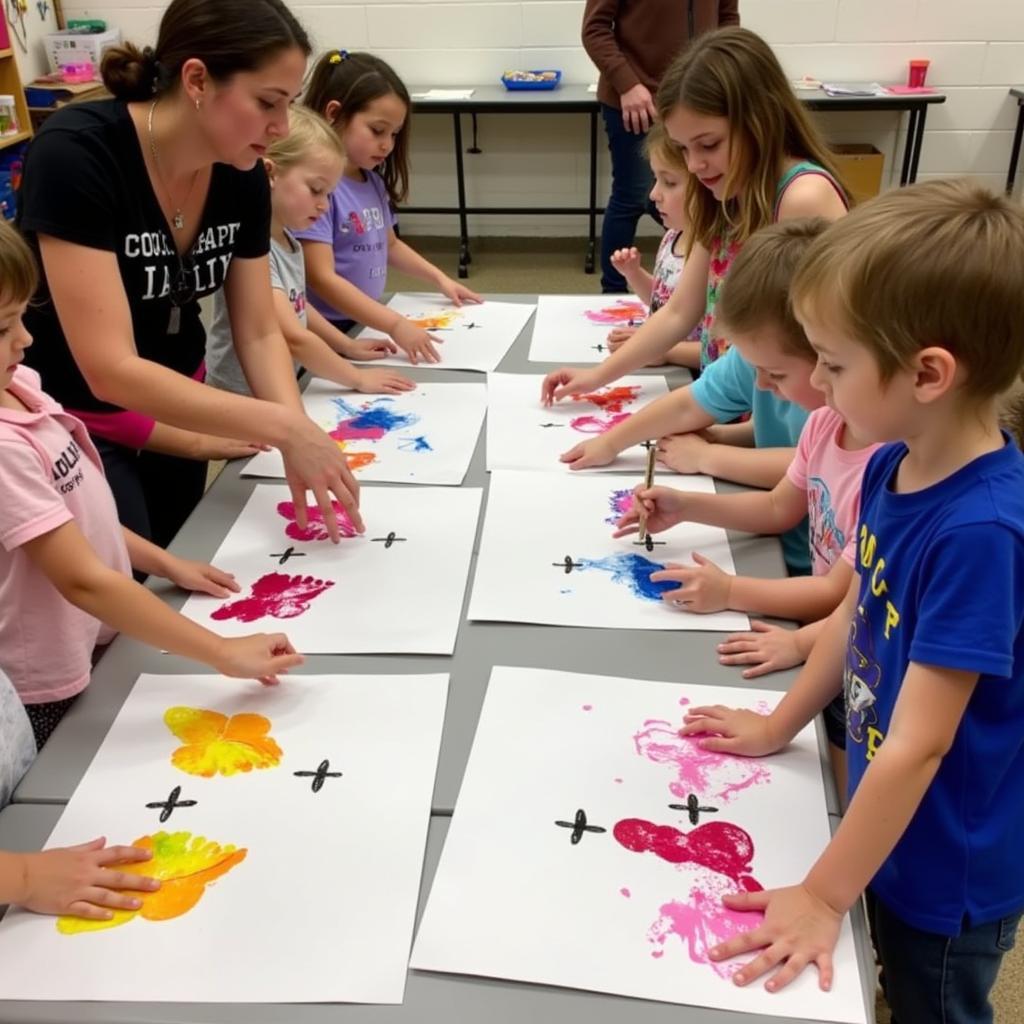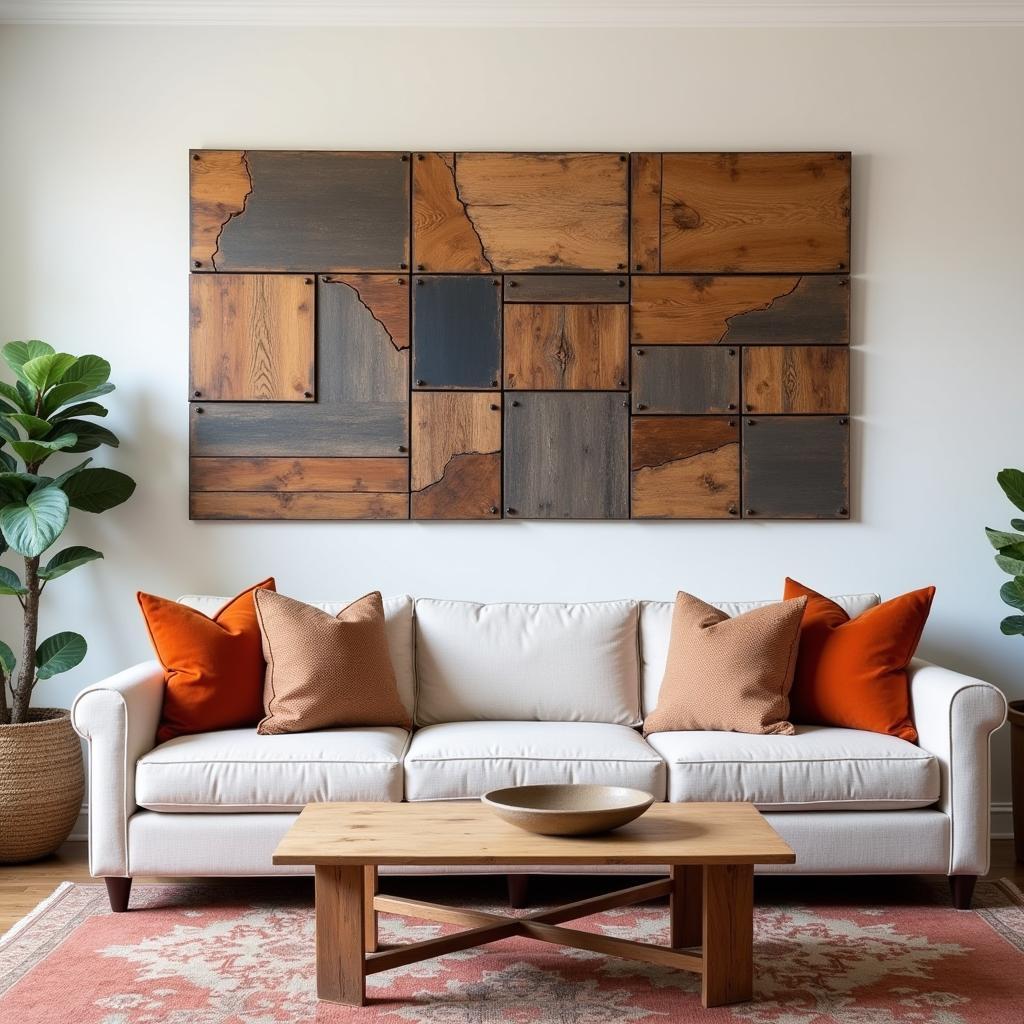Footprint Butterfly Art: A Creative Journey
Footprint Butterfly Art is a delightful way to blend creativity and nature, transforming simple footprints into vibrant, winged masterpieces. Whether you’re a seasoned artist or just starting out, this unique art form offers a fun and engaging experience for all ages. This article delves into the enchanting world of footprint butterfly art, exploring its various facets, from basic techniques to inspiring project ideas. Let’s take flight into this colorful world!
Footprint butterfly art is surprisingly versatile, offering a wide array of creative possibilities. From simple, colorful designs for preschoolers to intricate, detailed creations for older artists, the only limit is your imagination. It’s a fantastic way to introduce children to the wonders of nature and art, fostering their creativity and fine motor skills. As an artist, I find this medium particularly exciting because it utilizes a readily available, personal element – our own footprints! This adds a unique, intimate touch to each artwork, making it truly special.
Exploring Different Footprint Butterfly Art Techniques
Creating footprint butterfly art is a relatively simple process, adaptable to different skill levels and age groups. Let’s explore some exciting techniques you can employ:
- The Classic Footprint Butterfly: This involves dipping your foot in paint and stamping it twice onto paper, mirroring the prints to form the butterfly’s wings. You can then add details like antennae, body, and patterns with markers, paintbrushes, or craft materials.
- The Handprint and Footprint Butterfly: Combine handprints and footprints to create a larger, more detailed butterfly. The handprints can form the upper wings, while the footprints create the lower wings, offering a more dynamic and visually interesting composition. This method is perfect for incorporating a wider range of colors and textures.
- The Multi-Colored Footprint Butterfly: Experiment with multiple paint colors to create a vibrant, rainbow effect. Dip different parts of your foot in various colors before stamping, resulting in a unique and colorful butterfly. This is a great way to explore color mixing and blending.
Footprint Butterfly Art: A Fun Activity for Everyone
Footprint butterfly art is not just a fun activity; it’s a fantastic learning opportunity. Children can learn about symmetry, colors, and insect anatomy while engaging their creative minds. It also encourages them to connect with nature, appreciating the beauty and delicate balance of the ecosystem. For adults, it’s a relaxing and therapeutic activity, allowing for creative expression and mindfulness. It’s a beautiful reminder of the simple joys in life, much like the Critters Art critters art projects which encourage exploration of various animal forms.
Making Footprint Butterfly Art with Preschoolers
Working with preschoolers on footprint butterfly art can be an incredibly rewarding experience. Keep the process simple and fun, focusing on exploration and experimentation. Consider using washable paints and large sheets of paper to allow for free movement and minimize mess. This can be combined with other preschool bug art preschool bug art projects for a more comprehensive exploration of insects.
- Step 1: Prepare your workspace with newspaper or a drop cloth.
- Step 2: Pour non-toxic paint onto shallow plates or trays.
- Step 3: Gently guide the child’s foot onto the paint, ensuring even coverage.
- Step 4: Carefully stamp the foot onto the paper, repeating to create the second wing.
- Step 5: Let the footprints dry completely.
- Step 6: Add details like antennae, body, and patterns with markers or paintbrushes.
 Preschoolers Creating Footprint Butterfly Art
Preschoolers Creating Footprint Butterfly Art
“Footprint butterfly art allows children to express themselves in a unique and tactile way, fostering a love for art and nature simultaneously,” says renowned art educator, Dr. Amelia Hart. “It’s a wonderful way to cultivate their creativity while developing essential motor skills.”
Footprint Butterfly Art: Beyond the Basics
Once you’ve mastered the basic techniques, there’s a world of creative possibilities to explore. Consider incorporating different materials like glitter, sequins, and feathers to add texture and dimension. You can also use stencils or stamps to create intricate patterns on the wings.
- Nature-Inspired Butterflies: Use natural materials like leaves, twigs, and flowers to embellish your butterfly wings. This adds an authentic touch and connects the artwork to the natural world.
- Themed Butterflies: Create butterflies inspired by specific themes, like holidays, seasons, or favorite characters. This adds a personalized touch and makes the artwork even more special. You could even explore themes related to kids handprint art for Father’s Day kids handprint art for father’s day for a cohesive family art project.
- 3D Butterflies: Add dimension to your butterflies by cutting out the wings and attaching them to a stick or pipe cleaner. This creates a mobile-like effect, bringing the butterflies to life.
“The beauty of footprint butterfly art lies in its simplicity and accessibility,” adds art therapist, Mr. David Lee. “It’s a powerful tool for self-expression and can be incredibly therapeutic for both children and adults.”
Conclusion
Footprint butterfly art is more than just a craft; it’s a journey of creative exploration and self-discovery. From simple footprint butterflies to elaborate, multi-media creations, the possibilities are endless. So, gather your materials, unleash your imagination, and embark on this enchanting adventure with footprint butterfly art!
FAQ
- What kind of paint is best for footprint butterfly art? Non-toxic, washable paints are ideal, especially for children.
- Can I use other body parts to create butterfly art? Absolutely! Handprints, fingerprints, even elbow prints can be incorporated.
- What can I use for the butterfly’s body and antennae? Pipe cleaners, markers, yarn, and even natural materials like twigs work well.
- Can I create footprint butterfly art on other surfaces besides paper? Yes, you can use canvas, fabric, or even wood.
- How can I preserve my footprint butterfly artwork? Frame it, laminate it, or take a photo to capture the memory.
- What are some other insect art projects I can try? Consider exploring eric carle art projects for preschool for more insect-themed inspiration.
- How can I involve my family in this art project? This is a fantastic family activity. Everyone can contribute by creating their own butterflies and combining them into a collaborative piece.
If you need assistance, please contact us. Phone: 02462573573, Email: [email protected]. Or visit us at Savico Megamall, 7-9 Đ. Nguyễn Văn Linh, Gia Thụy, Long Biên, Hà Nội 10000, Việt Nam. We have a 24/7 customer support team.


